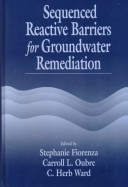AATDF Monograph
1 total work
Sequenced Reactive Barriers for Groundwater Remediation
by James F. Barker and etc.
Published 29 November 1999
Permeable, reactive barriers have the potential to minimize operation times and operation costs as well as limiting the migration of contaminated groundwater plume. Sequenced Reactive Barriers for Groundwater Remediation brings us one step closing to utilizing this promising remediation technology.
The plumes chosen for this study contain a mix of chlorinated and aromatic hydrocarbons. And unlike previous tests, this one expands the investigation of beyond the use of granular iron. In fact, the object is to use combinations of several technologies in succession. This in situ sequencing of reactive barriers is an extension of the treatment etraini approach.
Sequenced Reactive Barriers for Groundwater Remediation is a record of research performed by the Advanced Applied Technology Demonstration Facility (AATDF) at Rice University. A Department of Defense grant funds the AATDF. The project's goal is the development of innovative remediation technologies.
The plumes chosen for this study contain a mix of chlorinated and aromatic hydrocarbons. And unlike previous tests, this one expands the investigation of beyond the use of granular iron. In fact, the object is to use combinations of several technologies in succession. This in situ sequencing of reactive barriers is an extension of the treatment etraini approach.
Sequenced Reactive Barriers for Groundwater Remediation is a record of research performed by the Advanced Applied Technology Demonstration Facility (AATDF) at Rice University. A Department of Defense grant funds the AATDF. The project's goal is the development of innovative remediation technologies.
